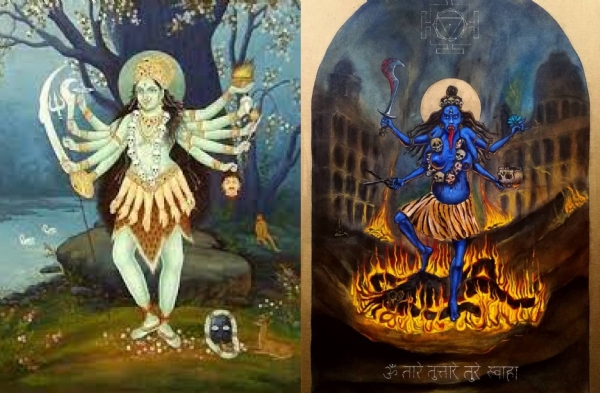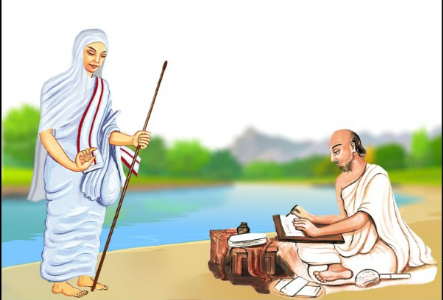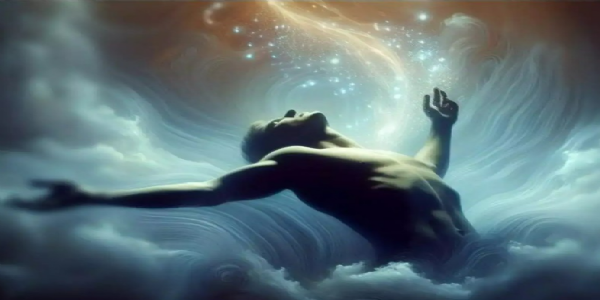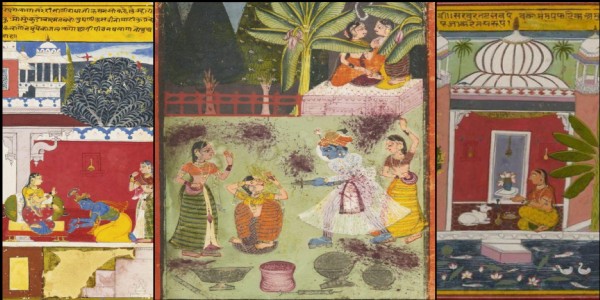Mother Warrior Tara- From Tantra to Buddhism
Tara personifies many qualities of feminine traits. She is mother of Mercy and Compassion.
Total Views | 508
"On a lotus seat, standing for realization of voidness, Tara Ma, the emerald-colored, one-faced, two-armed Lady In youth's full bloom, right leg out, left drawn in, Showing the union of wisdom and art - homage to you!”
- First Dalai Lama (1391-1474)
Tara…..or Ma Tara, Goddess who is seen as a compassionate mother for all beings. As in the Mahavidyas, Tara is the second Mahavidya, who is considered as the incarnation of Adishakti, the primal mother, the Parvati.

According to the legends, Shiva’s wife, Sati, and her father King Daksha did not invite Shiva and sati for Yagya, which was an insult for Shiva as he is his son in law. Sati was so ashamed and enraged that she threw herself in that Yagna, and got engulfed by fire and killed herself. Shiva was heartbroken due Sati’s demise, and angrily started his Tandav which destroyed the cycle of life and the entire Universe is at stake. To stop the Tandav and calm the agonized Shiva, Vishnu resolved to help Shiva, so he gathered all Sati’s remains and scattered them across the world.
Sati’s each body part fell in a different direction and blossomed as a different goddess, each being a manifestation of Sati. Tara is a goddess which was born from Sati’s eye in Tarapith, which is now located in West Bengal, India.
Essentially, although Tara is shown as a motherly, compassionate and protective deity, But Hindu tradition also sees Tara in her Primal and untamed nature.
There are three incarnations of Tara- Ekajaṭā, Ugratara, and Nīlasarasvatī.
In Hindu Tantric Tradition, Tara is a manifestation of Durga or Mahadevi, Kali and Parvati. She is a stary fire which is beautiful but perpetually self- combusting; she is the core of absolute and insatiable hunger that propels all life, the entire universe.
As Per Shakti Maha Bhagwat, She is the one who created the first Seed from which the entire universe took birth in the form of Lord Narayana.
In the Devi Bhagavata Purana and the Kalika Purana, she is described as a fierce goddess. Her iconography portrays her holding a katri chamra, a khadga, and an indivara lotus in her four hands.
In such depictions, Tara, shown with dark-blue skin tone, wears tiger hide as clothes, with a larger belly, and standing on the chest of a corpse. Tara also wears a crown made out of five skulls and carries a serpent around her neck as a necklace. In fact, that serpent (or naga) is said to be Akshobhya, Tara’s consort and a form of Shiva, Sati’s husband.
Buddhist Tradition -
Tantra represents one of the most significant amalgamations of the Vedic and Buddhist tradition. Buddhist sees Tara as the ‘symbol of primal female energy who is consort of Avalokitesvara, who is symbol of primal male principle’.
The Buddhist worship of Tara originated in Hinduism with the birth of Shakyamuni Buddha. Tara is also seen as mother of not just a Shakyamuni but all the buddhas before and after him.
Buddhist thoughts also view Tara as the essence of enlightenment, or the Bodhisattva. Tara is considered a savior from all the worldly suffering and endless cycle of birth-death.
Most famous origin story of the Buddhist Tara Goddess is that she comes to life from the tears of Avalokiteshvara- the Bodhisattva of Compassion, who weeps upon witnessing the sufferings of the world.
Another story of Tara's origin, according to the Tara Tantra, She is born as a King’s Daughter, a compassionate and spiritual patron, she always gives offerings to monks and nuns. With this practice, she obtained great virtue, and the monks told her that, because of her spiritual attainments, they would pray that she be reborn as a man and spread Buddhist teachings. She responded that there was no male and no female, that nothing existed in reality, and that she wished to remain in female form to serve other beings until everyone reached enlightenment, hence implying the shortfall in the monk's knowledge in presuming only male preachers for the Buddhist religion.
The important sect of Buddhist Sects, Shakti Buddhists also consider Tarapith Temple, which is essentially Hindu temple, as a holy site.
In other sects such as Mahayana Buddhism and Vajrayana Buddhism, Tara is seen as a Buddha herself. With many manifestations, Tara herself has 21 forms into which she can transform, each with a different look, name, attributes, and symbolism.
The White Tara is typically shown with fair skin, with eyes on her palms. She also had a third eye on her forehead, which represents her attentiveness and Awareness. She is associated with compassion, healing and longevity.
The Green Tara, is the mother goddess who protects us from Eight Fears which are lions, fire, snakes, elephants, water, thieves, imprisonment, and demons. She is also associated with activities which are essentially important for the smooth working of the universe. She is usually depicted with dark-green skin and is probably the most popular incarnation of the goddess in Buddhism.
There are other incarnations of Tara ma includes- Red Tara, Blue Tara, Black Tara, Yellow Tara.
Tara personifies many qualities of feminine traits. She is mother of Mercy and Compassion, she is the source, the prime female aspect of the universe, who gives birth to warmth, compassion and relief from bad karma as experienced by ordinary beings in cyclic existence.
She engenders, nourishes, smiles at the vitality of creation, and has sympathy for all beings as a mother does for her children.
Tara is a source to whom we can attach at the worst crisis of our life, she is one with guiding light in any storm, and if anything threatens her children, she is a warrior who fought and protected her children.
I always feel there is a small fragment of Tara in every mother, as we are mothers, we are protectors of our children, we are compassionate to our family.
So preserve and connect with your inner Tara. She will guide us with all the warmth and love!
--
Bharati Web








